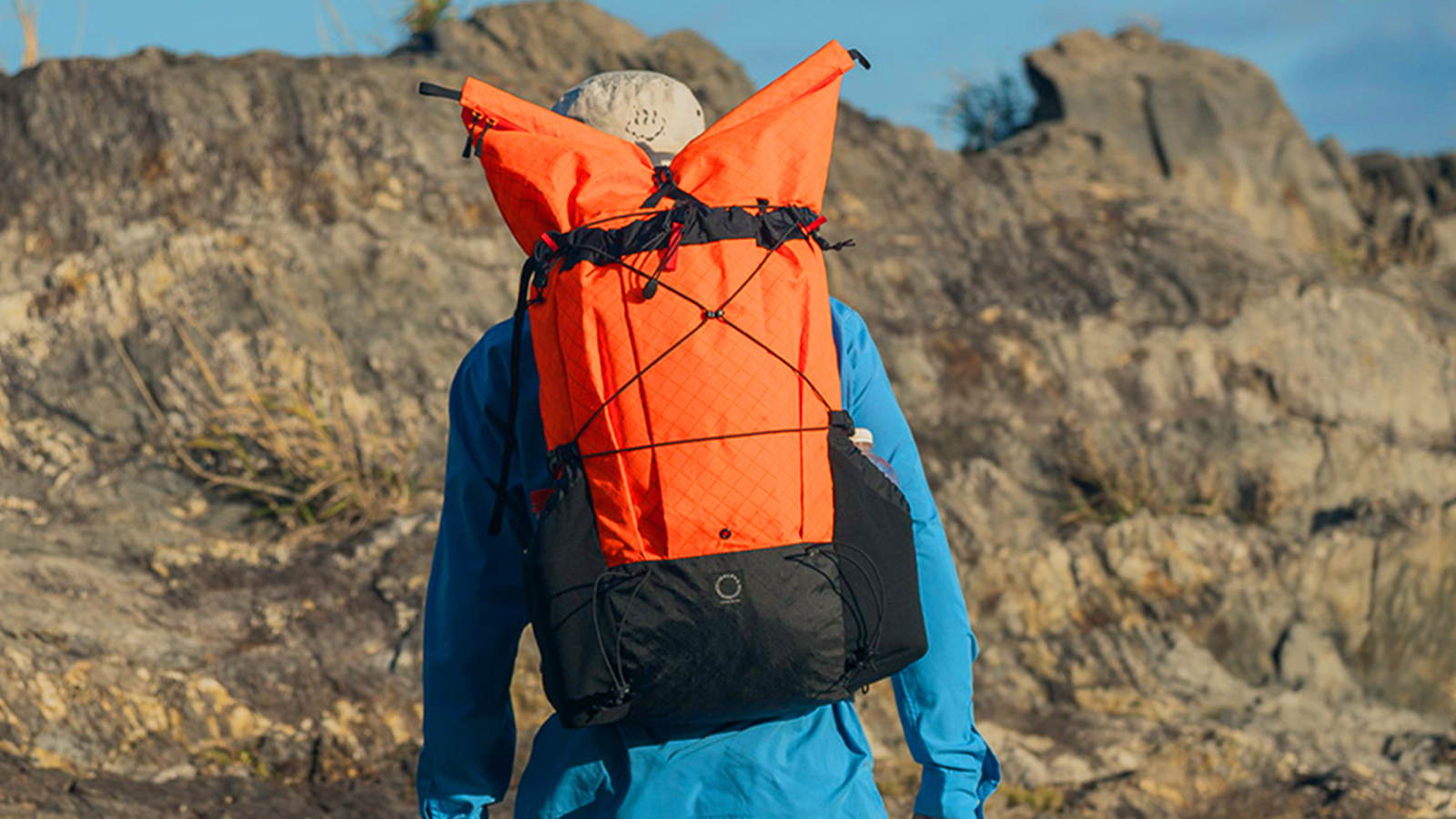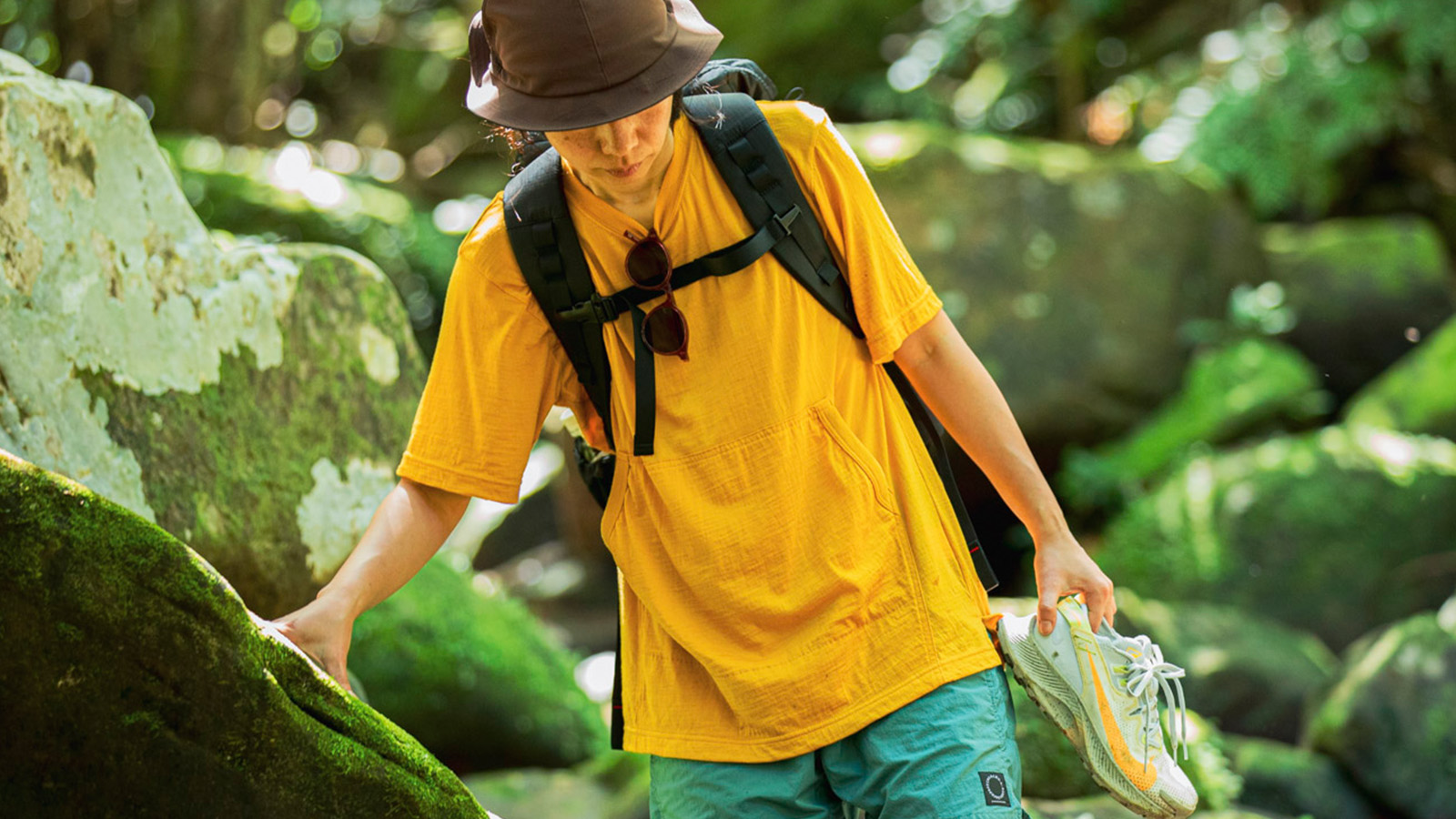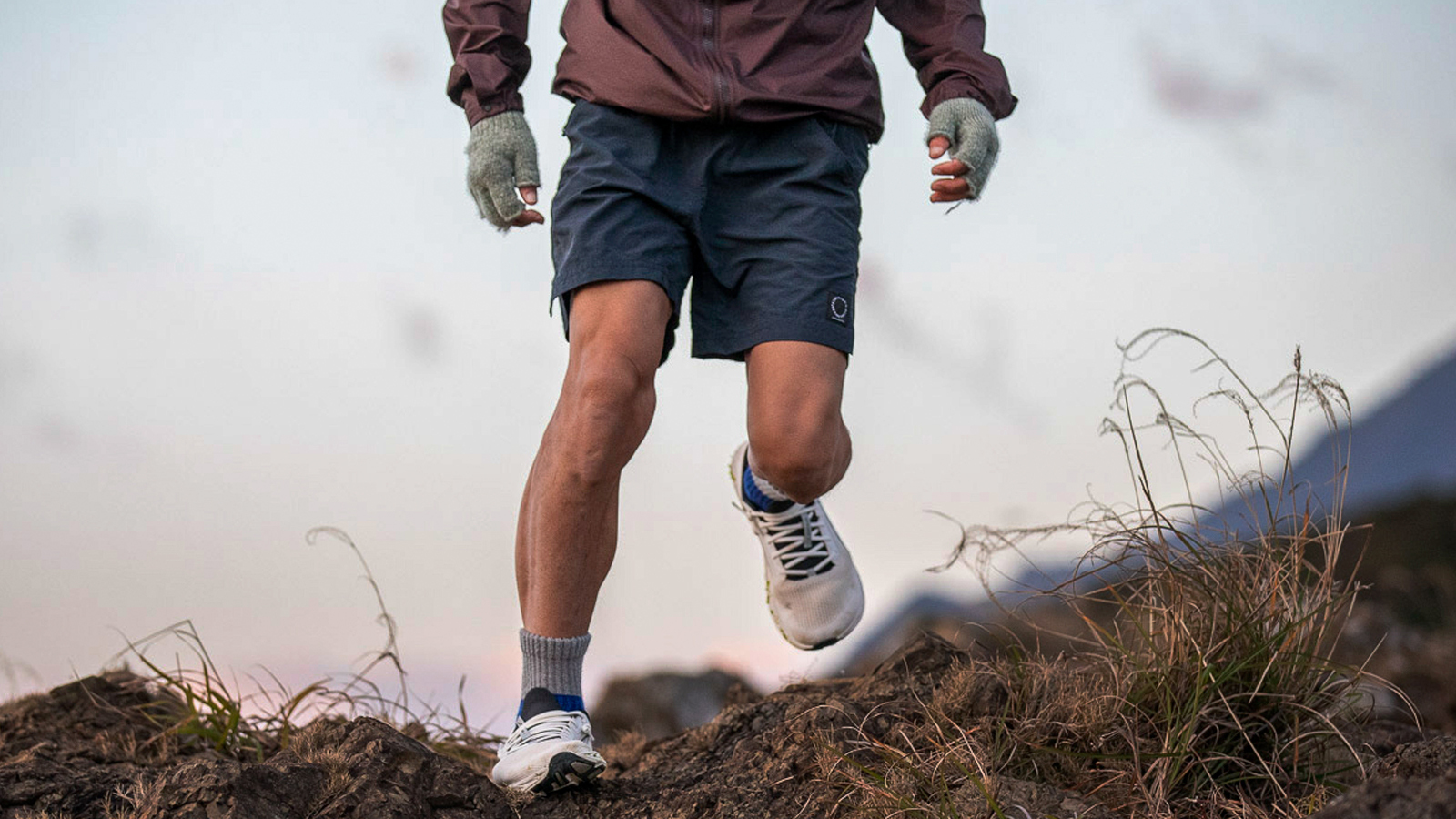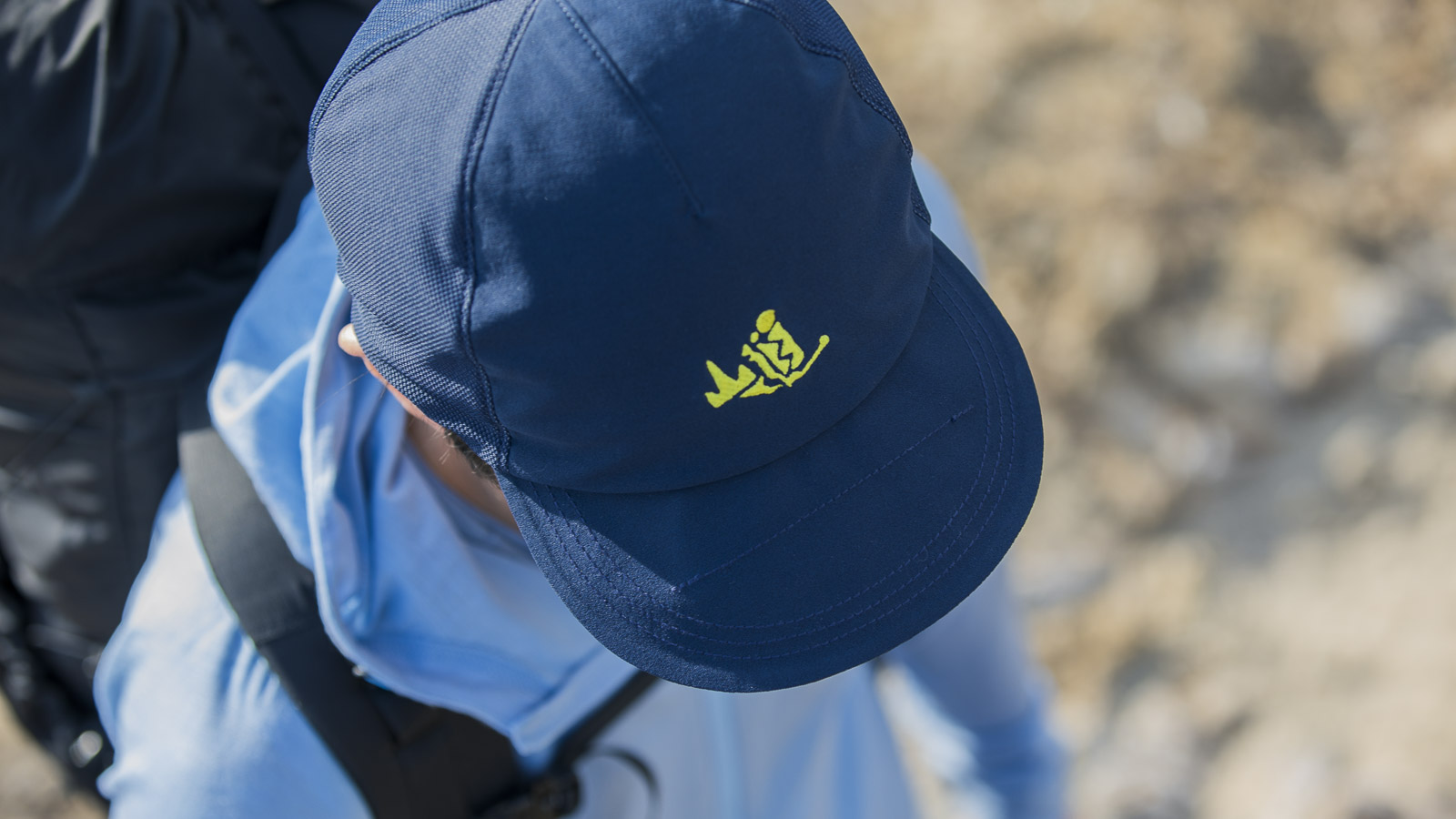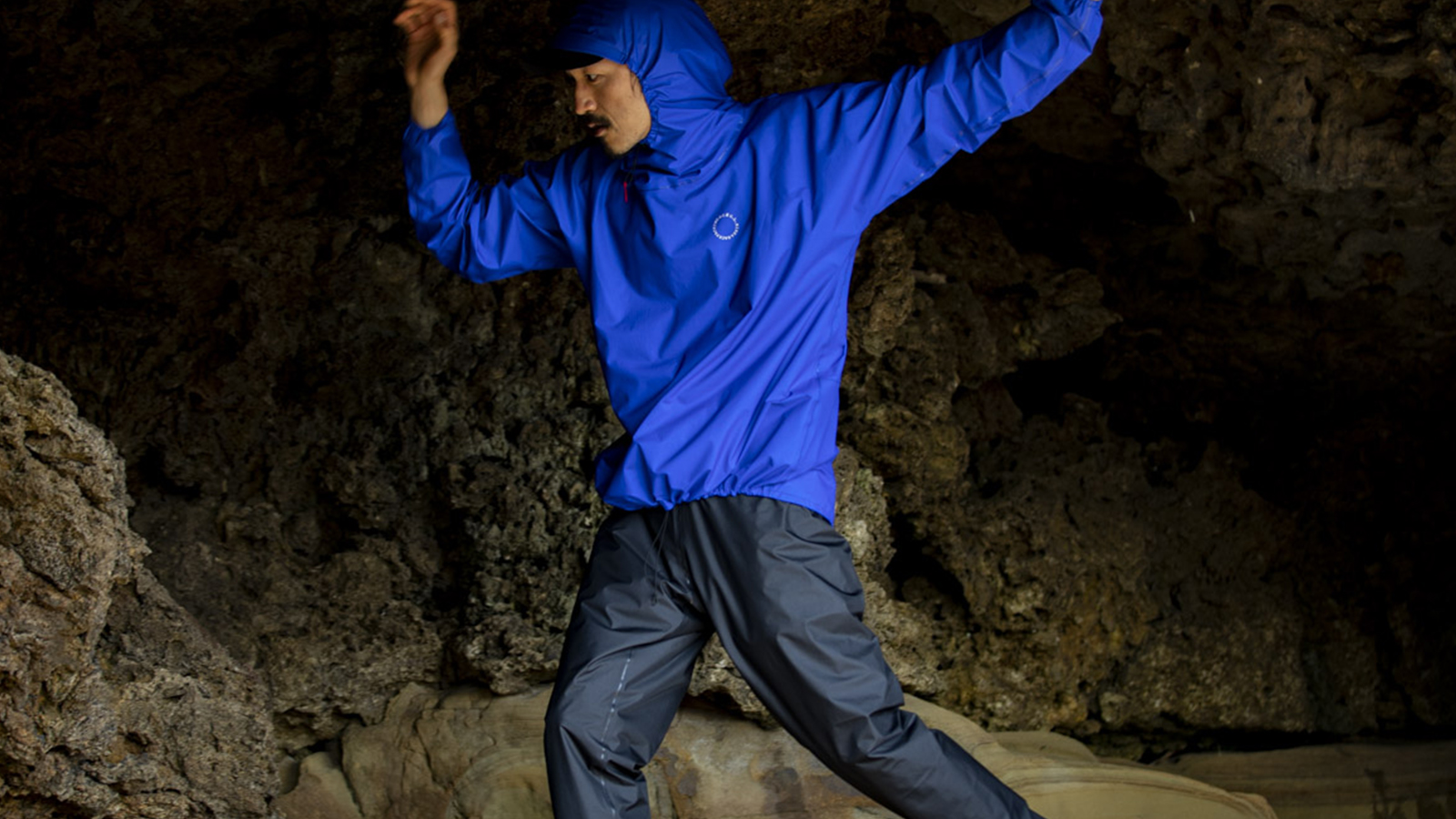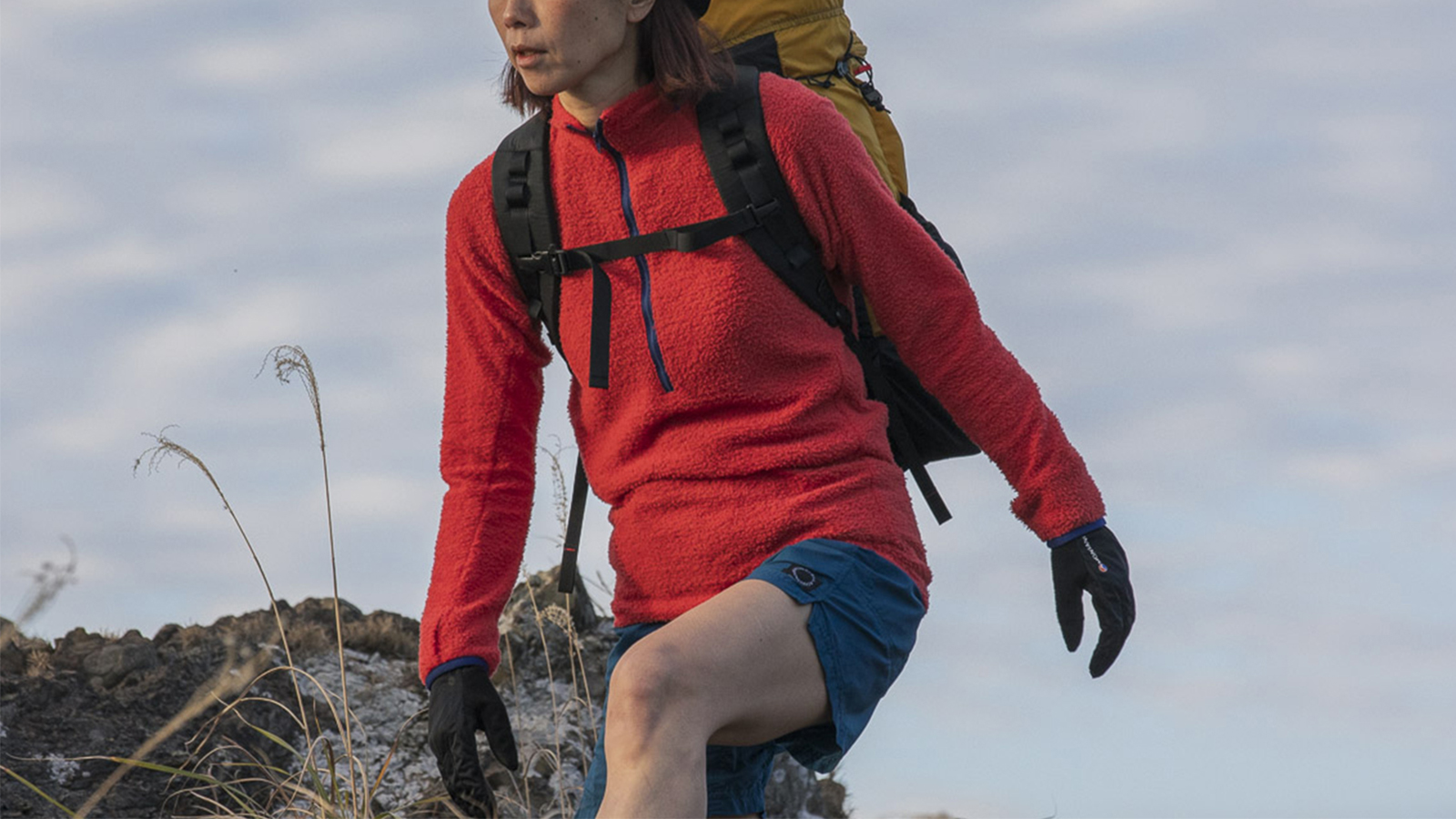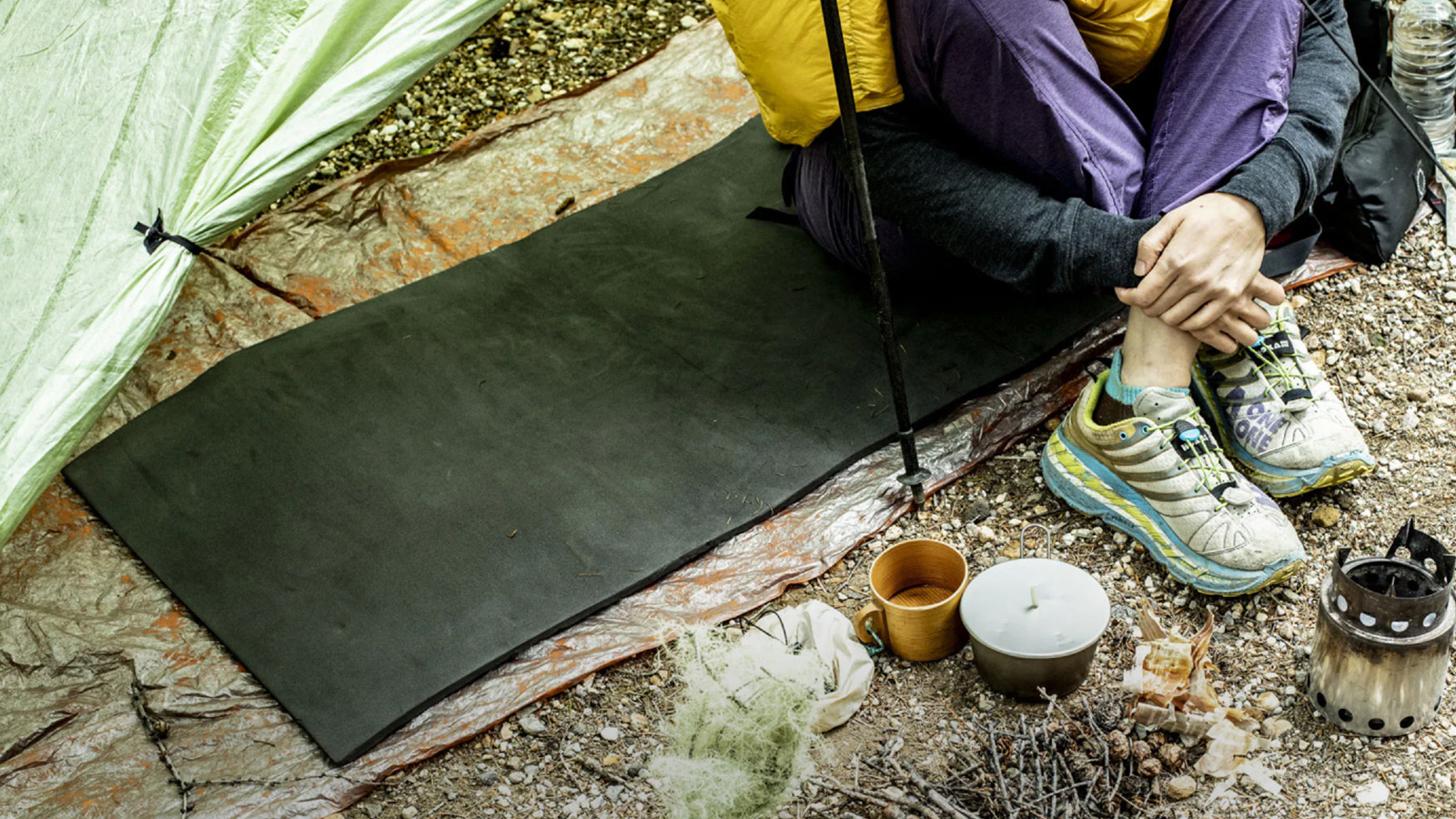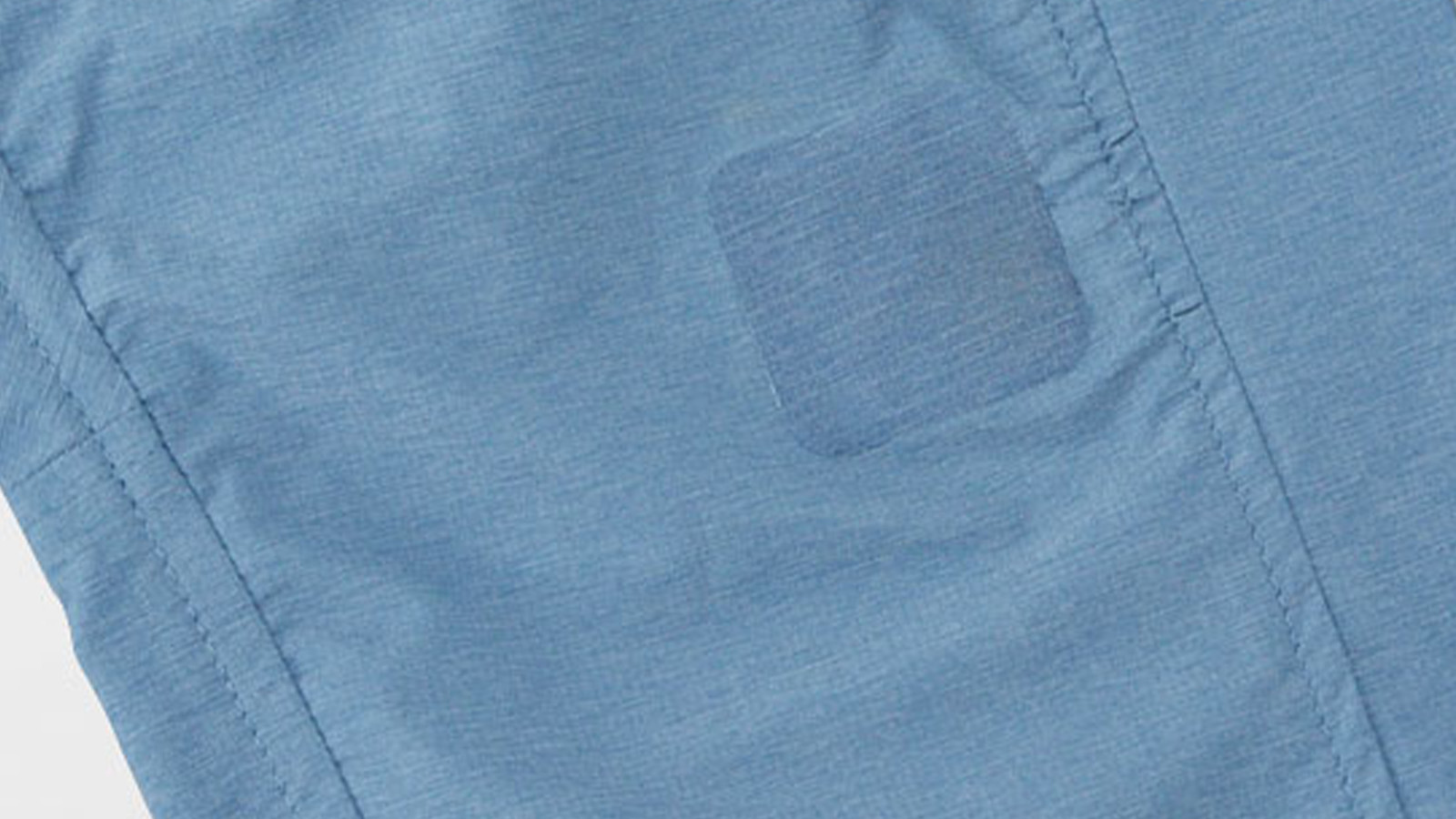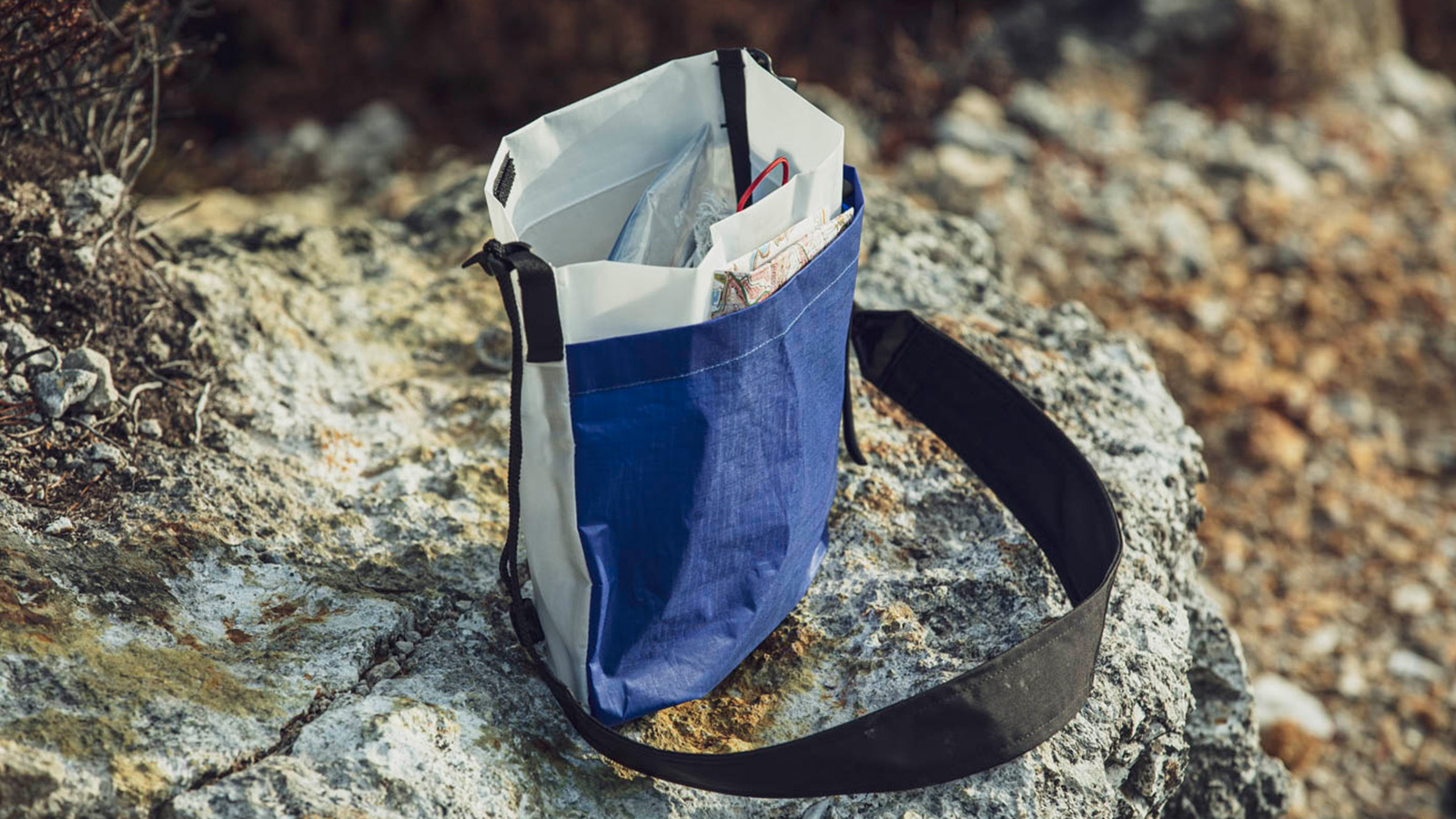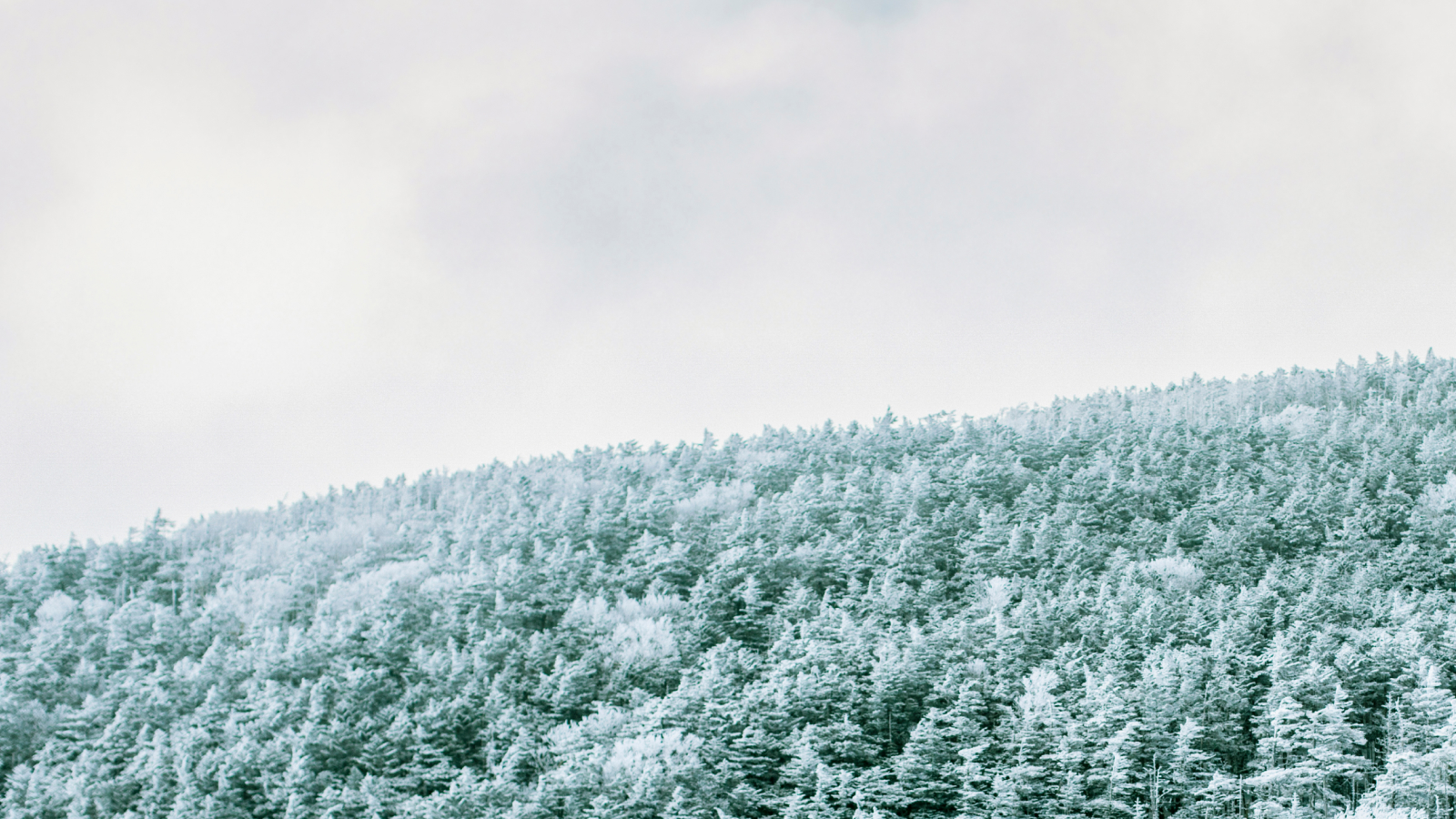#1: Underwear on trail
Photos: Masaaki Mita, Ai Hino
#1: Underwear on trail
Photos: Masaaki Mita, Ai Hino
When it comes to ultralight hiking, there's no shortage of resources on gear, technique, and pack weight. But when it comes to topics unique to women’s experiences on the trail, the conversation is still catching up.
From planning trips that overlap with menstrual cycles to choosing underwear that stays comfortable after days of sweating, some topics simply don’t get enough airtime. Yet, these are the realities that many hikers face. Instead of brushing them aside, we believe in sharing openly—because when we do, we empower each other to hike with more confidence, comfort, and clarity.
In this spirit, Ai Hino sat down with our Kyoto and Kamakura store staff—each an avid ultralight hiker—for a candid and inclusive roundtable. Together, they explored how to balance personal care and performance on the trail, covering everything from makeup and undergarments to menstrual management and physical wellbeing.
This ongoing series, “Mountain Women” aims to make space for conversations that often go unspoken. In our first edition, we’re talking trail underwear—what works, what doesn’t, and how small choices can make a big difference with comfort on the mountain.
Whether you're looking for gear solutions, curious about what your fellow hikers are doing, or simply seeking a more inclusive hiking culture, we hope this series offers a few helpful insights—and maybe even a moment of recognition.
Yamatomichi Kyoto
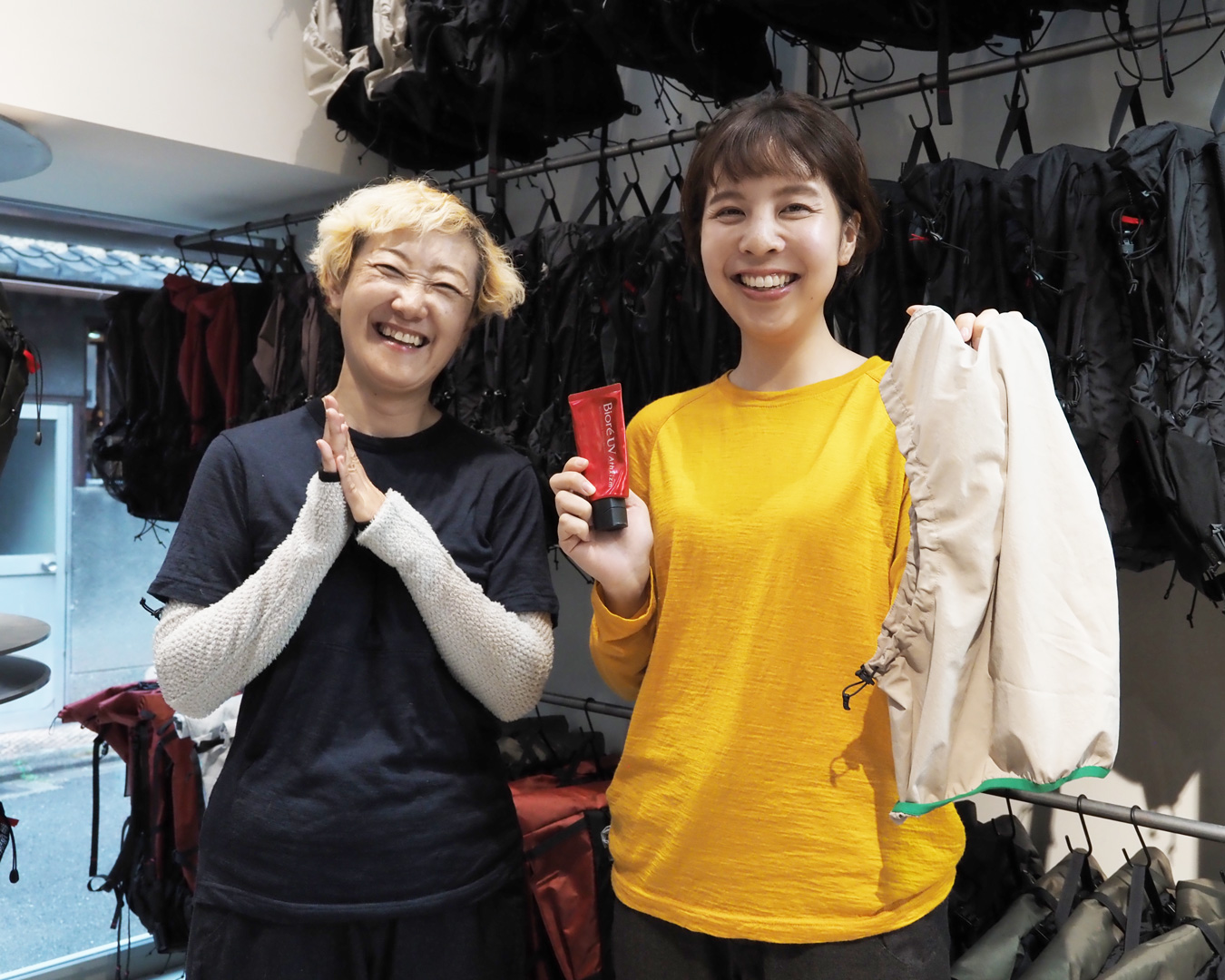
Mayumi Shoji (left) A born-and-raised Kyoto local, Mayumi traveled through New Zealand in her 20s, worked in cafés, and later joined Yama-shoku-on (山色音), the predecessor to Yamatomichi Kyoto. These days, she mainly hikes in the Kansai region and the Japanese Alps, snowboards in Hokkaido for two months each winter, and practices yoga in her daily life. In spring 2024, she spent 9 days hiking in New Zealand. Her signature blonde hair has been part of her look for over 10 years. She’s especially knowledgeable about care methods and products that focus on recovery.
Ayana Nagai (Right) A passionate traveler, Ayana has trekked the John Muir Trail in the U.S., explored Patagonia in Chile, and in 2024, spent 14 days hiking the Walker’s Haute Route from Mont Blanc in France to the Matterhorn in Switzerland. She’s also into marathons, trail running, yoga, and a mostly plant-based lifestyle. Her makeup is always on point—so naturally, we’re curious how she keeps it up in the mountains.
Yamatomichi Kamakura

Tsunoda Yuko After working at a mountain hut in the Northern Alps and at an outdoor gear shop, Yuko eventually joined Yamatomichi. Thanks to her previous experience, she has tried out a wide range of products across various brands, bringing real-world insight to this roundtable. While she keeps her makeup and skincare routine as minimal as possible, she’s particular about choosing gear that feels good on the skin and performs well in the mountains.
Periods and underwear
— Underwear, periods… they’re personal topics, and not always easy to bring up around men. But as hikers, we care—what about you all?
Mayumi: The topic comes up more than you’d think—especially when women visit the store. Yamatomichi doesn’t make any underwear, but when I walk them through my setup, there’s often this look of relief, like, “Finally, someone’s figured this out.” That’s when I realized: a lot of us are still piecing this together on our own.
Yuko: Same here — it’s actually a pretty common question at the Kamakura store. I think a lot of women are simply curious about what others are actually using.
— Let’s go through your personal picks. I’m curious how you each balance comfort and weight. Ayana, what do you use for underwear?
Ayana: I use Icebreaker’s Siren Bra and Bikini. I used to hike in regular (non-Merino) underwear — odor wasn’t a huge issue, but I’d get cold, and the underwire would rub painfully when running. The Siren is a Merino-synthetic blend: wireless, soft, compact, and surprisingly supportive. Super comfortable, even on long days.
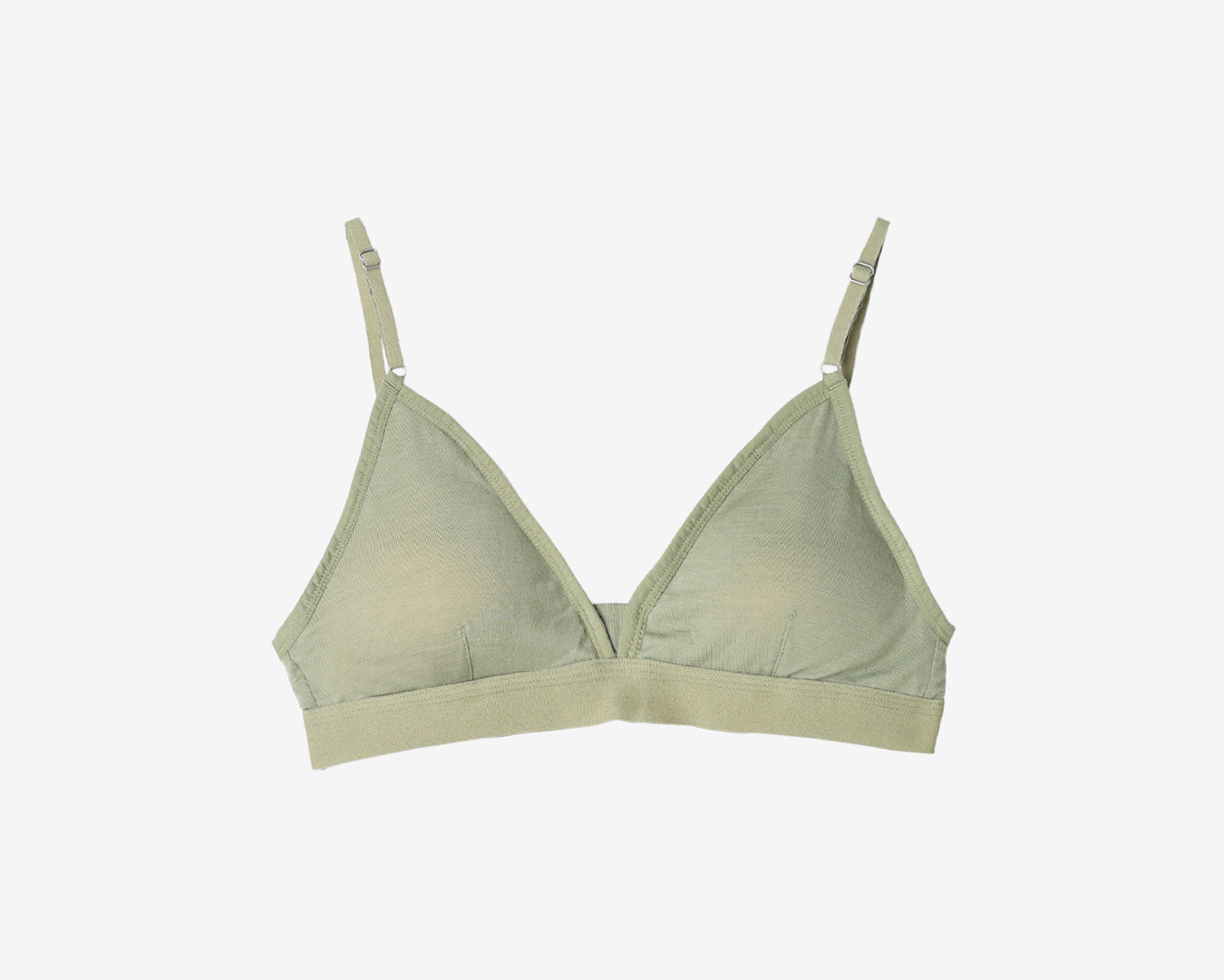
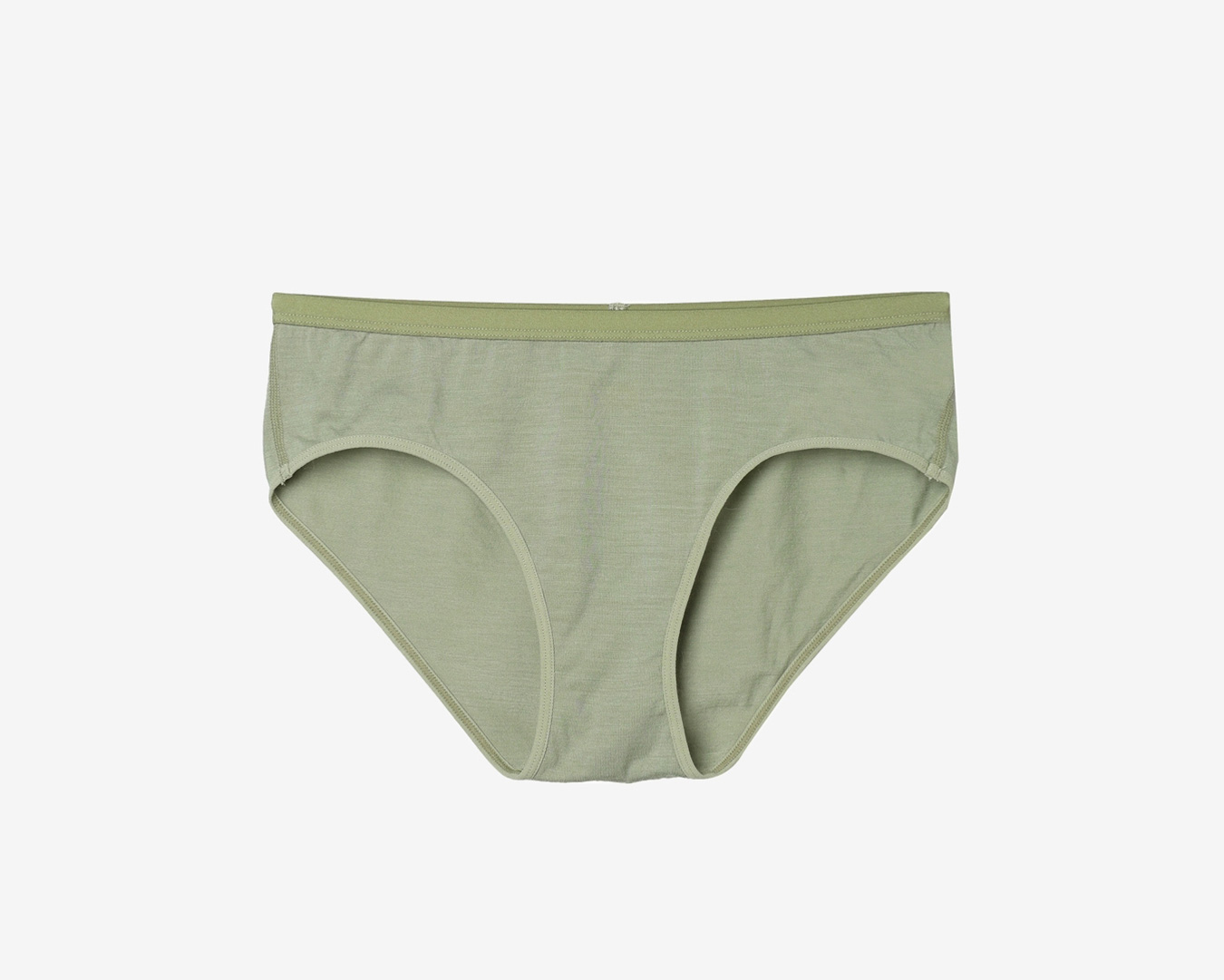
The fabric uses core-spun yarn, with high-quality Merino wool wrapped around a nylon core, improving resistance to abrasion and tearing. It also holds up well to frequent washing. To add stretch, Lycra is blended in, resulting in a comfortable, body-hugging fit.
— I use those too. They’re so comfy. How did they hold up on your two-week hike in Europe?
Ayana: I didn’t wash the bra at all during the 14 days, and I rotated between two pairs of briefs—wearing each for about three days before washing. They didn’t smell at all, and I never felt cold either. It worked out really well.
— Wow, so you wore the bra the whole time?
Ayana: Yeah, I even slept in it — it never bothered me. Even after a shower, putting it back on while still a bit sweaty didn’t feel uncomfortable. Maybe I’m not that picky, but still. Aside from during my period, I didn’t use any liners or pads with the briefs. This setup’s been my go-to for a while now.


— Flattering fit, fun colors—perfect for daily wear too. Good pick.
Mayumi: You got my attention. I’d like to try it.
Yuko: I have one from Icebreaker too, but my longtime favorite was the Smartwool Merino Seamless Strappy Bra. Sadly, it’s been discontinued, and the new version uses different materials, so I’m not sure how it feels now. What I loved about it—and Merino in general—is that it stays warm even when damp. So putting it back on after a bath, even if it’s still a little sweaty, never felt gross. To me, the real discomfort comes from cold, wet fabric—not just moisture itself.
Everyone: Very true! (laughs)
Yuko: Right? It’s kind of like putting on damp socks — that brief moment of discomfort. But once it’s on, it dries quickly and you hardly notice it after a while.
Mayumi: I like bras with cross-back straps because the shoulder straps don’t slip off. I’ve got sloped shoulders, so sometimes the straps fall off otherwise.
Yuko: Montbell makes a cross-back style too, but the fit didn’t quite work for me. I’ve found that some Japanese brands don’t always nail the shape. Also, synthetic fabrics tend to trap odor, which can be a downside for long days out.
Ayana: When I hiked the JMT (John Muir Trail), I used synthetics—they were super light, which was great, but they smelled really bad. These days, I only wear synthetic underwear for runs or short hikes. Maybe the materials have improved since then, though. What I can say is it’s not just about odor or insulation—fit and feel matter too. The right support can make a big difference in how you experience the hike.
— We’ve gone deep into bra talk already, but I’d love to hear Yuko’s recommendation next: trunks!
Trunks for women?
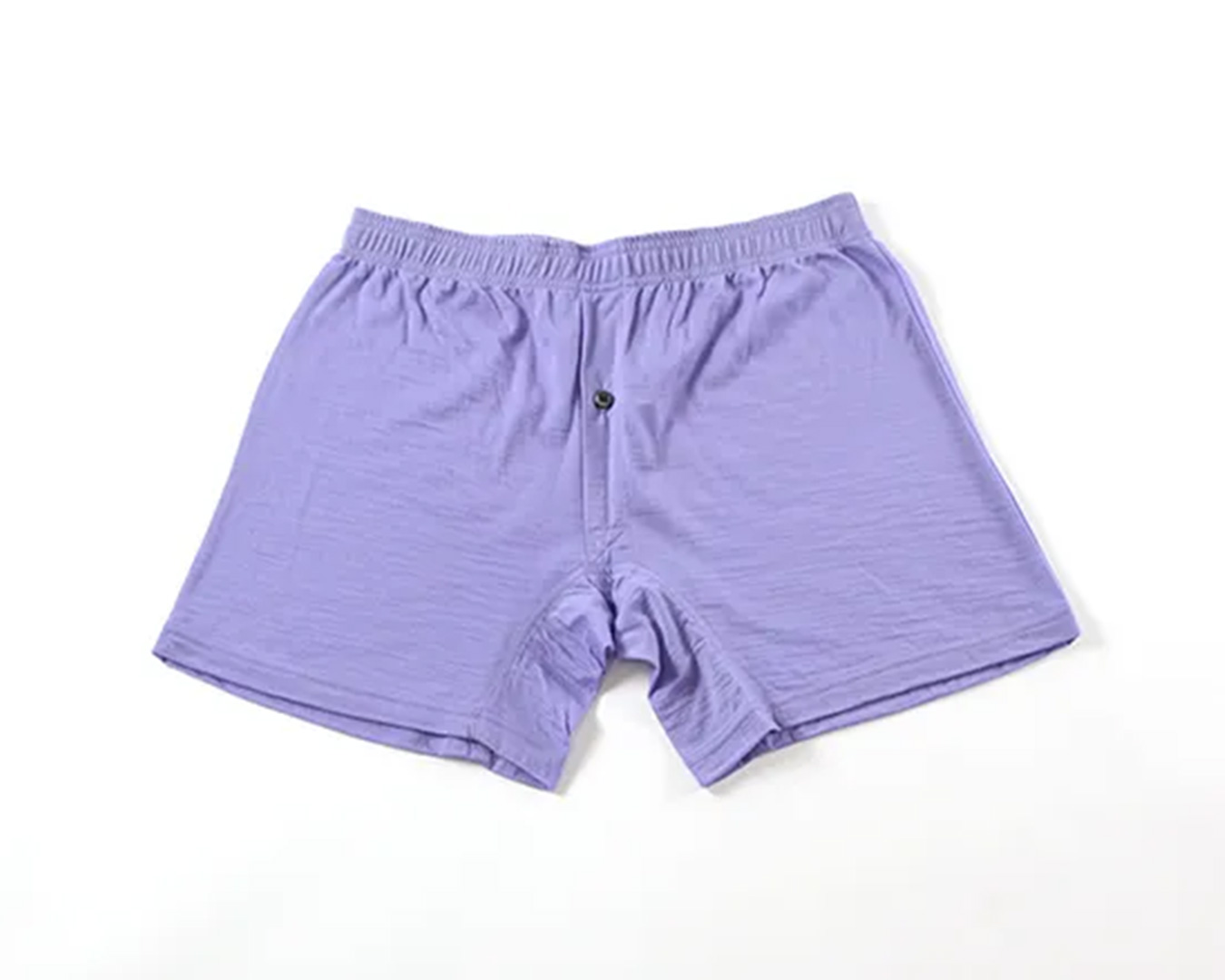
Part of the irregularly released “RE-FABRIC” line—which aims to make full use of leftover fabric from clothing production—these trunks feature an authentic style made with 100% Merino wool. While they don’t offer the same durability as nylon blends, they provide a uniquely soft texture that only pure wool can deliver.
Yuko: Tight-fitting underwear can cause dryness and irritation — and lately, maybe with age, I’ve really started noticing that discomfort in sensitive areas. I’d been looking for boxer-style underwear that isn’t too tight. A male hiking friend who wears trunks recommended these: Re:fabric Merino Trunks from Brown by 2-tacs. They’re breathable, which I appreciate, though I used to think trunks felt too loose and airy. But these strike a nice balance — somewhere between snug boxers and looser trunks.
Ayana: So they’re trunks, but not too baggy—that sounds great.
Mayumi: (Checking the website) Oh, they only restock them occasionally? Now I’m really curious.
Yuko: Yeah, they’re part of a special line that uses leftover fabric from clothing production. Since it’s T-shirt fabric, I was a little concerned about how durable they’d be—it’s thin and soft—but honestly, if I were going on a long hike, these are the ones I’d wear without hesitation. I’ve also liked the WUNDERWEAR boxers from Bring, but for me the fabric was too thick. After a heavy sweat, I’d notice everything else drying out, but my underwear would still feel damp. So I started wondering — maybe thinner Merino dries faster? That’s what I’ve been trying out lately.

Mayumi: Looks like the men’s trunks come in S-M and M-L sizes. Which size do you wear, Yuko?
Yuko: I went with M-L and it’s totally fine. I heard they shrink a little in the wash. I’m on the taller side, so I think S-M would work for most women.
— Did you get any chafing or dryness?
Yuko: Not at all. The irritation and itchiness I used to feel from tight underwear have disappeared. Some people have sensitive skin and get heat rashes or irritation from sweat, so being able to stay comfortable without needing ointments or special care is a big plus. And the fact that these are made from leftover fabric fits with the “Zero Waste Manufacturing” philosophy that Yamatomichi also values—definitely something worth supporting.
Mayumi: Is the waistband elastic?
Yuko: Yes, it’s elastic but wrapped in wool. The leg openings don’t have elastic.
Mayumi: That sounds ideal. I like that. The ones I’ll talk about later from Bring also switched from flat external elastic to seamless knit construction, which made them a lot softer and more comfortable to wear.
— The idea that “women should wear women’s underwear” might just be a matter of tradition or assumption. There’s absolutely no reason women can’t choose trunks if they work better for them.
The gold standard of period underwear
– When it comes to that time of the month—Is Wacoal still the gold standard?
Yuko: I’ve tried about four different types of period underwear, including some from outdoor brands. And honestly, this one from Wacoal—a well-known underwear brand in Japan—has been the best at keeping pads in place. It’s a sport-specific design, and it really works.
Yuko’s Trail Essential:
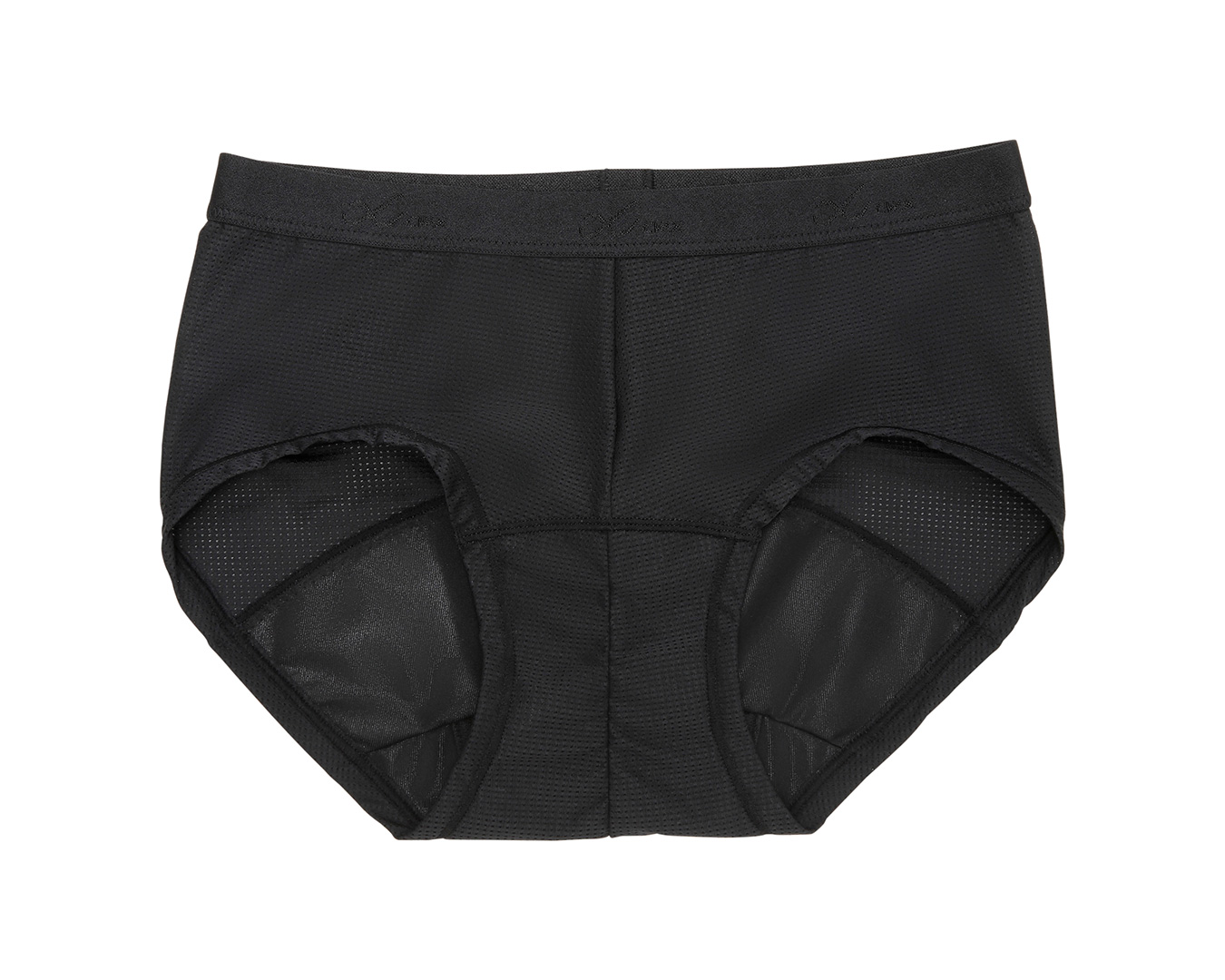
These sanitary shorts are designed to be “breathable and secure.” Wacoal’s unique 3D pattern and gathered gusset construction provide a snug fit that keeps pads from shifting. A large fan-shaped waterproof panel extends from the gusset to the rear to prevent leak
Ayana: Oh wow, keeping things in place is definitely important.
Yuko: This is the Wacoal “CW-X”
3D Sanitary Shorts. The part where the pad wings fold over is really well-designed—it keeps the wings from peeling off, so nothing shifts around. The fabric feels smooth too, so even when you sweat, it doesn’t get stuffy or sticky. It really minimizes discomfort. Other options I tried would shift out of place when I lifted my legs high or moved around a lot—they just didn’t feel right.
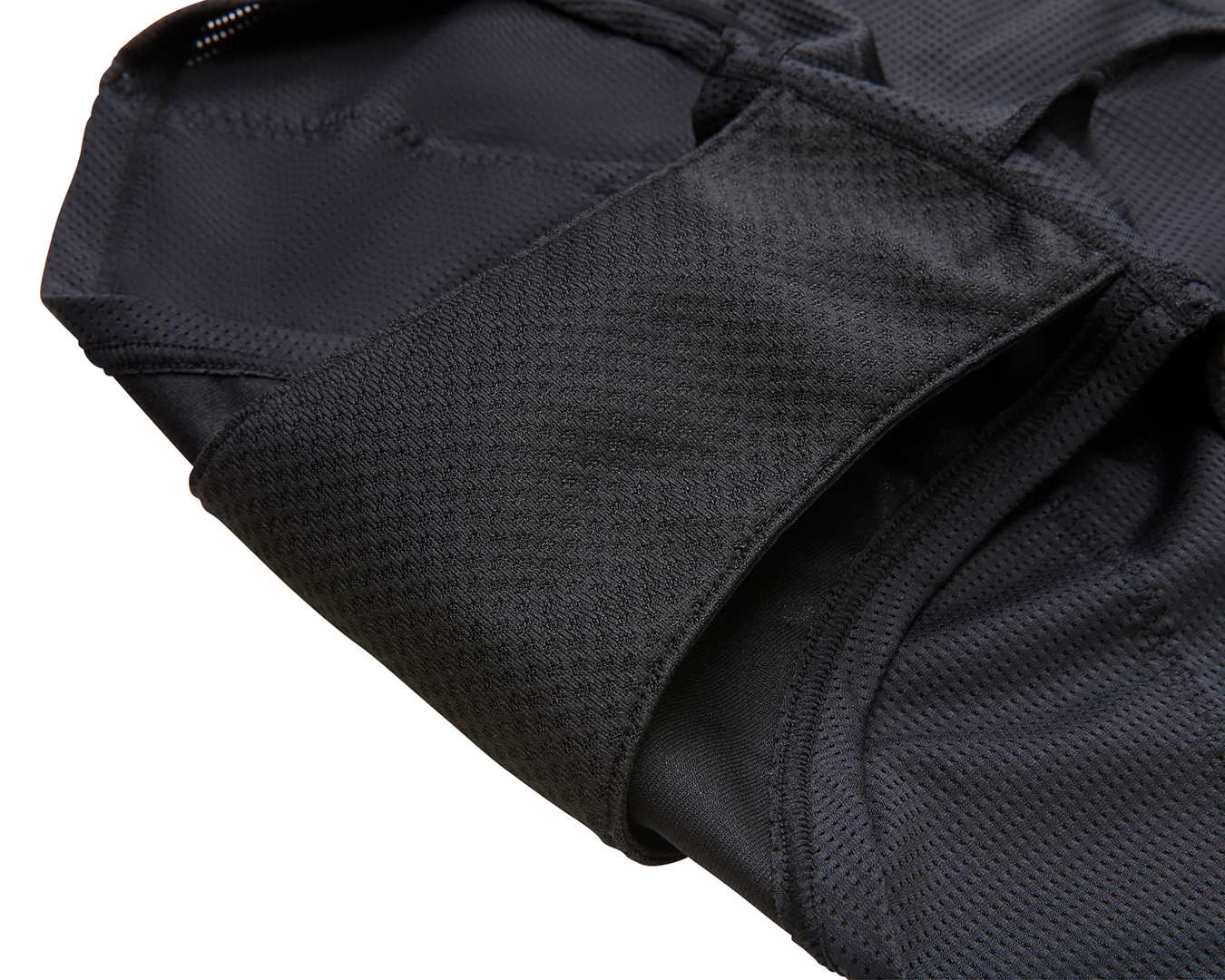
The inside of Wacoal’s “CW-X” 3D Sanitary Shorts. You can really see they designed it to keep that pad in place. Classic Wacoal quality.
Ayana: Wow… this is super helpful. I think it was on the Omine Okugake Trail—really tough hike, and I was sweating like crazy. The pad absorbed all the sweat, started slipping, and was almost falling off my underwear. I had to keep walking while everything was soaked. When it shifts like that, it rubs and can cause chafing too. This sounds like a great solution.
Yuko: And don’t you find rainy days especially tough? I’ve had times when I got completely drenched, and the small pad I was wearing soaked up rainwater and swelled up—it got super heavy.
Ayana: And if it shifts and the blood leaks onto your underwear… that’s just the worst.
Yuko: Exactly. As you get older, your flow tends to lighten, but for younger women with heavier periods, I imagine they’d really need to change frequently. I honestly thought, “This is why Wacoal is so trusted.”
— Yuko, your gear reviews are so informative! When you know you’re protected from leaks and can trust your gear, it really helps you stay focused on hiking. There’s so much depth to how we manage our periods and products—we should dig into that more next time. Now then, Mayumi, tell us about your underwear setup?
Natural materials—for trail and everyday life
Mayumi: Lately I’ve been really into silk bras. They feel amazing on the skin and don’t feel restrictive at all. And even though they’re light and soft, the straps don’t slip. The surface of the bra is smooth, so it doesn’t show through outer layers, and since the part touching your skin is silk, there’s no odor either.
— Oh, silk sounds nice. Is it made specifically for outdoor use?
Mayumi: Not at all! You can find them by just searching “silk shorts” on online or something. (laughs) For short hikes—like overnight trips—I’ll even wear silk briefs. They’re just a single thin layer, super lightweight and pack down really small.
— That’s a good approach—not limiting yourself to outdoor brands but focusing on the fabric itself. I might look into silk too. I recently bought a silk tank top from a brand called Nu, and silk is supposed to be breathable, moisture-wicking, insulating, and even antimicrobial. I wore it for two or three days as a test and it didn’t smell at all. The director even recommended it for running and hiking, so I’m looking forward to trying it out more.
Mayumi: Exactly. Same with silk—I’ve started thinking natural fabrics are best, whether for everyday or the mountains. I’ve also been testing a non-wired, cup-included bra from One Nova, the 3D Wireless Bra. I don’t notice any smell, and although it fits a bit tighter on me, it also provides good support. The shape looks really nice, even under tank tops or tighter tops.
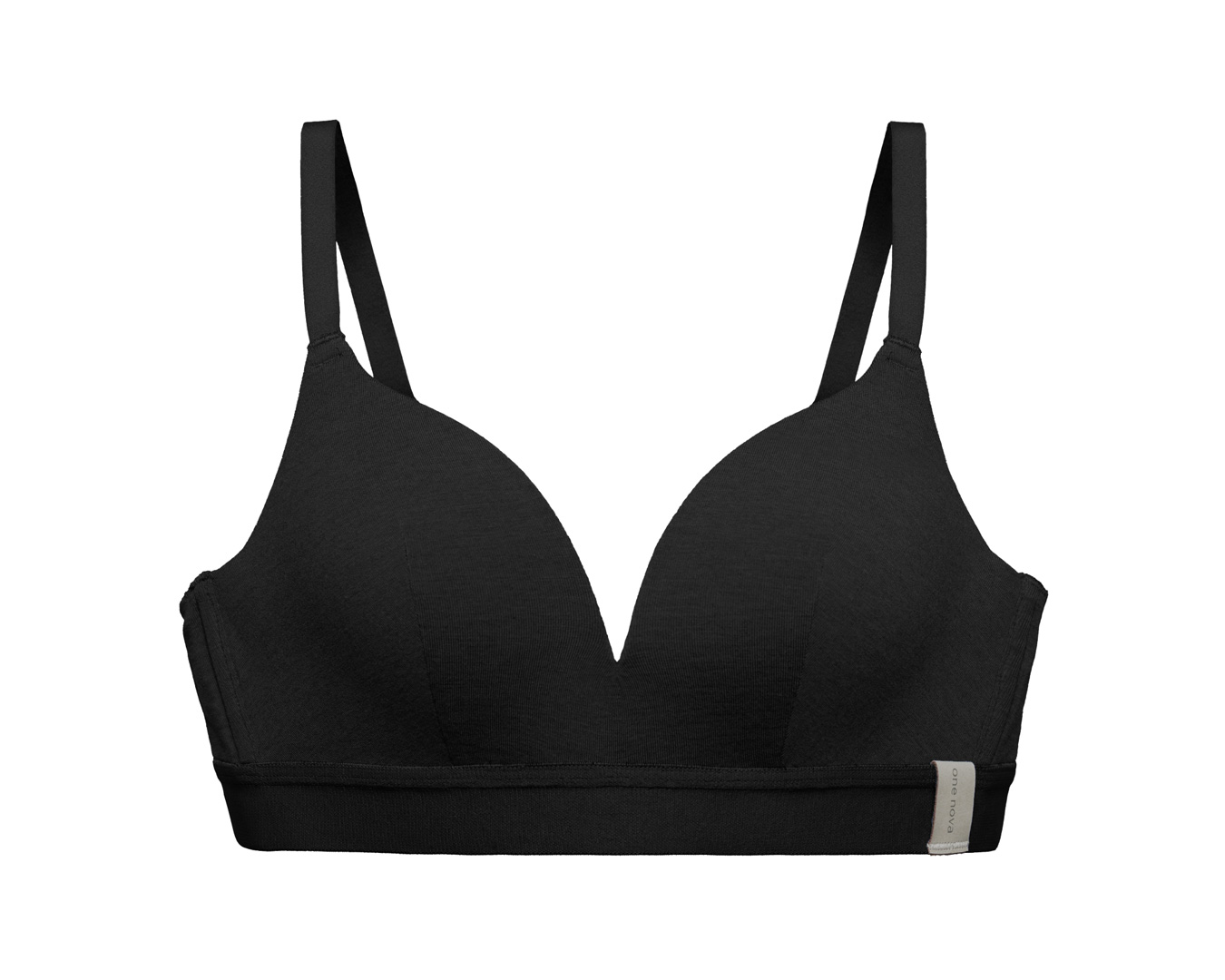
The fabric is made from a unique blend called “nova wool,” developed to reduce discomfort from odor, sweat buildup, and chill. It consists of 24% Merino wool, 71% micro modal, and 5% polyurethane. The brand also aims to eliminate limitations based on “body type” or “gender,” offering a wide range of sizes (XS to XXXL) and gender-free, unisex designs.
Yuko: I bought the shorts from One Nova. As for the bra, I heard from the brand that the cup area absorbs moisture, so I hesitated and haven’t bought it yet—but I’m definitely curious.
Mayumi: When it comes to shorts, I really like these boxer briefs from Bring. Even when I sweat, they keep my stomach warm and feel soft and supportive. I don’t get any of that typical wool itchiness either, so they’re a favorite of mine. I switch things up depending on the season and the hike, but these are what I use most often in the mountains. I also love the WUNDERWEAR 50/50 by Bring.
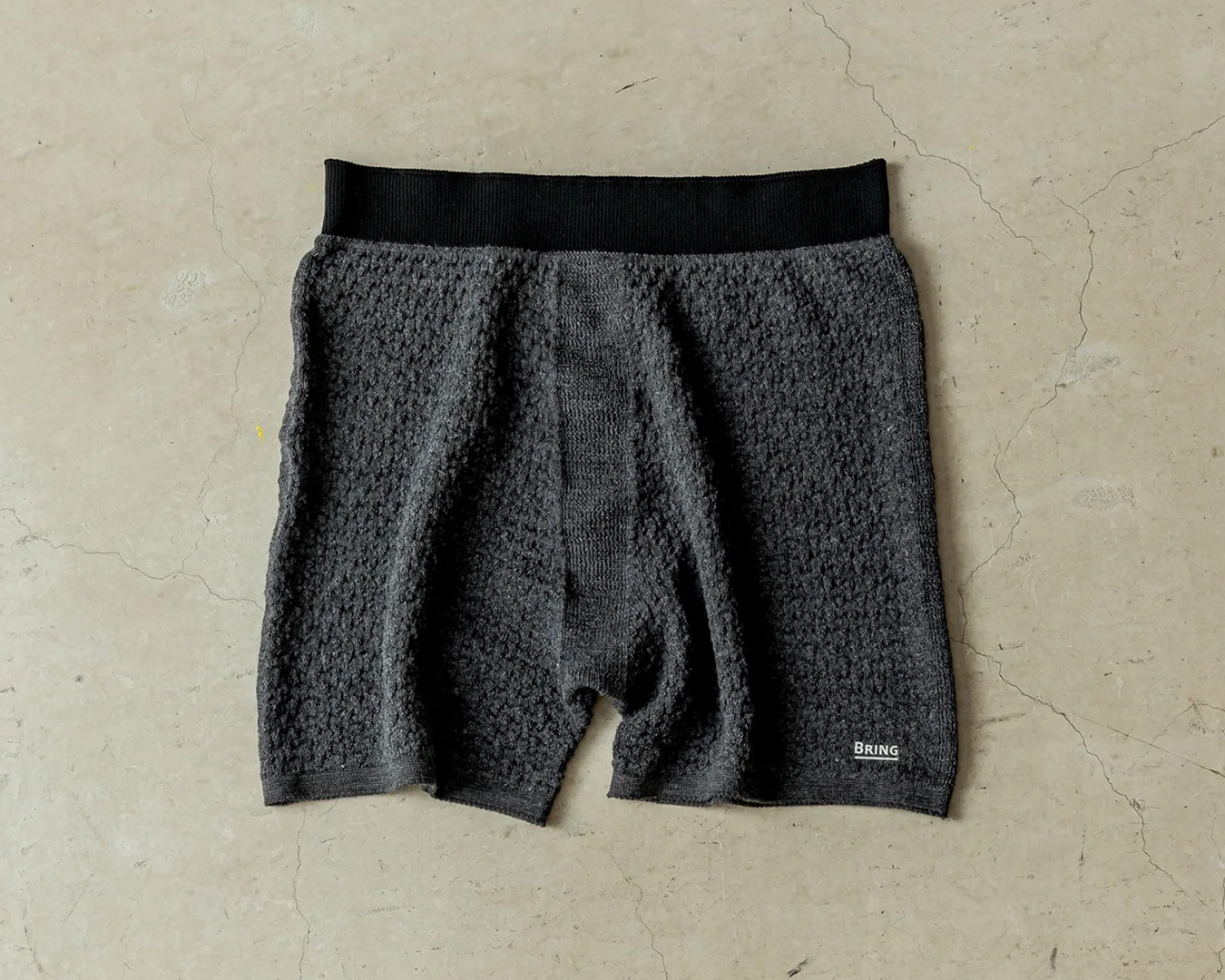
A unisex boxer short that combines the best qualities of Merino wool and recycled polyester. Made with a seamless construction to eliminate tightness, it’s designed to comfortably fit a wide range of body types. The waistband is also seamlessly knit into the body of the fabric, addressing a common issue with Merino boxers—odor buildup in the elastic band. These were developed as underwear you can wear for up to four days.
— I’m a Bring fan too. By the way, wearing the same underwear every day to save weight is kind of a universal ultralight hiker thing—regardless of gender—and I think we’ve touched on that here. But how do you all feel about it personally? And what about the people around you? Like, is there still that sense of, “No way—I have to change my underwear every day?”
Ayana: Yeah, I think for people who aren’t used to this style of hiking, it might come as a bit of a shock. I can totally imagine some thinking, “No way!”
Yuko: The kind of folks who come to Yamatomichi to lighten their pack are usually on the same page — they’re used to just wearing the same pair the whole time.
Mayumi: I was definitely hesitant at first about wearing the same underwear for multiple days. But once I tried it, I realized it wasn’t that bad. I started thinking of it as just part of the hike, and gradually got used to it. Over time, I leaned more into ultralight and learned to shift my mindset between life on the trail and everyday life.
— So maybe it’s not about gender, but more about individual ideas of hygiene. Some people may feel resistance at first but adjust over time, while others may just never be okay with it—and that’s totally valid too. Thank you all so much for the great conversation!
Up next, we’ll be casually chatting about skincare and sun protection in the mountains. With hiking season in full swing, maybe you’re thinking, “I can cut back on makeup, but I still want to wear proper sunscreen,” or “I’d love to know about all-in-one skincare products that really work.” If that sounds like you—stay tuned!

Yamatomichi HLC Team – Communications / Editor / Designer
Meet Ai, a creative from Ehime Prefecture with a passion for people and place. After cheerleading in high school, she moved to Kansai for college and later worked as a design director in Tokyo and Osaka. In 2014, she returned to her hometown of Saijo, spending seven years in public relations and reconnecting with the region. A hike up Mt. Ishizuchi sparked her love for the outdoors. In 2023, she became the local coordinator for Yamamichisai and launched YON, a magazine focused on Shikoku’s outdoor lifestyle. Through creativity, Ai supports those she admires and brings regional stories to life — always grounded in her love for Shikoku.







